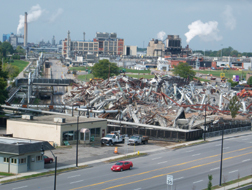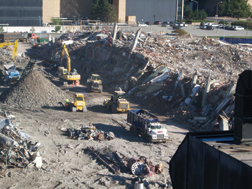e-Procurement Process Delivers Best Value For Kodak
...a supplier database and project-specific file management as well as instant and detailed bid results and communications. All activity is logged. The result is a standardized tool that can be used by all qualified parties.
“To date we have hosted in excess of 600 bid events for the FRP,” says Laudisi. “The process was so successful that we are currently integrating its use into our central procurement operations.” Steve Bills, LeChase senior vice president, says because the process is Web-based it also alleviated subcontractor fears over technical capabilities.
Payoff
LeChase used Kodak’s preferred contractors and prequalified others from throughout the region. “Our e-procurement specialist would contact the approved contractors and train them,” says Laudisi. “Typically, within a half-hour the contractor could proficiently maneuver through the system.”
LeChase managers uploaded bid packages into the system, sending bid notifications to appropriate contractors who could then view the package. Bidding consisted of logging on, viewing documents and requests for information, then entering a price and hitting the send button. Each bid package had a confidential internal estimate as part of an overall budget.
 David p. Stoklosa Many demolitions located near critical infrastructure were completed without collateral damage.
|
“When we initially started the process we experimented with different types of bidding including reverse auctions, where the buyer and seller reverse positions so the buyer drives the event,” says Raymond F. LeChase Jr., vice president. “As part of our post-bid review process we found out that in some instances contractors were able to stop bidding (lowering their price) well ahead of hitting their lowest possible price, which meant that we were not getting the best value or the same value we were getting by requesting sealed bids. As a result, we went primarily to sealed bids.”
He says reverse auctions work best in a competitive, high capacity marketplace. “One lesson we learned is that reverse auctions require a critical mass of bidders and that we understand their marketplace dynamics,” says Staples. “We need to know the marketplace and bidders and their work schedules to better position our firm and to make a determination as to whether we negotiate, use sealed bids or reverse auctions.”
 David p. Stoklosa Building implosions were a critical part of demo process.
|
The e-procurement process reduced paperwork and review and award times. “Everything was captured electronically, which eliminated confusion and potential disputes and the process was transparent in that everyone got the same pre-bid package and walk-through, plus all questions were addressed and answered electronically and shared with all bidders at the same time. Everything was on the table,” says Slovak. “We also do a post-bid review to make sure bidders completely understand the scope and schedule and included all costs associated with the project.”
Kodak hit savings of 15% or better on the e-bidding process. “It was a pretty uneventful but streamlined process and sometimes we were surprised by the bid spreads and comparisons to internal estimates,” says Slovak. “To copy all the specs on paper that went out electronically would have cost $186,000, so it is also a green process.”
It is also fast and economical. “Within two hours we had summary comparison sheets for bids and without electronics we would definitely not have finished this project on time,” says Laudisi. “We could seamlessly work with our bidders and the process did not require mailings or travel. I wouldn’t be surprised if this were commonplace in several years. It would be very beneficial for the construction industry.”

